My brief romance with the Ninja Foodi
Is the Ninja Foodi actually the pressure cooker that crisps? We dive into the device, the food and whether Ninja and Justin Warner made culinary magic.
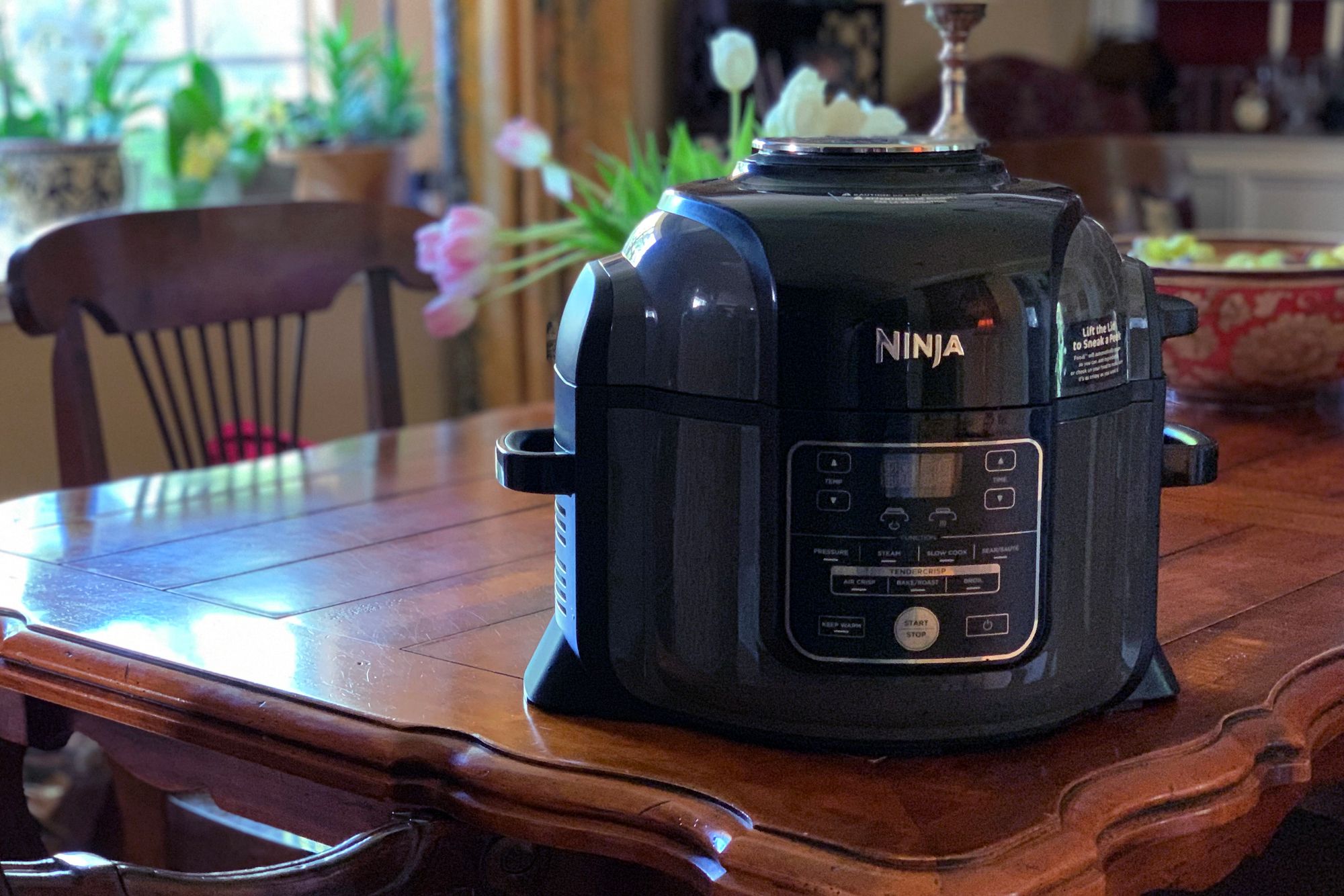
Editor's Note: The original version of this story was published on April 15, 2019, on the first edition of JWontheRoad.com as part of the "In the Kitchen" series.
I own a weird amount of cooking equipment. I've got a Kitchen Aid, an Instant Pot, a food processor, pots, pans, a mini-blender, a normal blender, a waffle-maker and more. It's already too much (trust me, my family tells me every time I move).
Someone like me should not be in the market for a new kitchen implement.
But here we are.
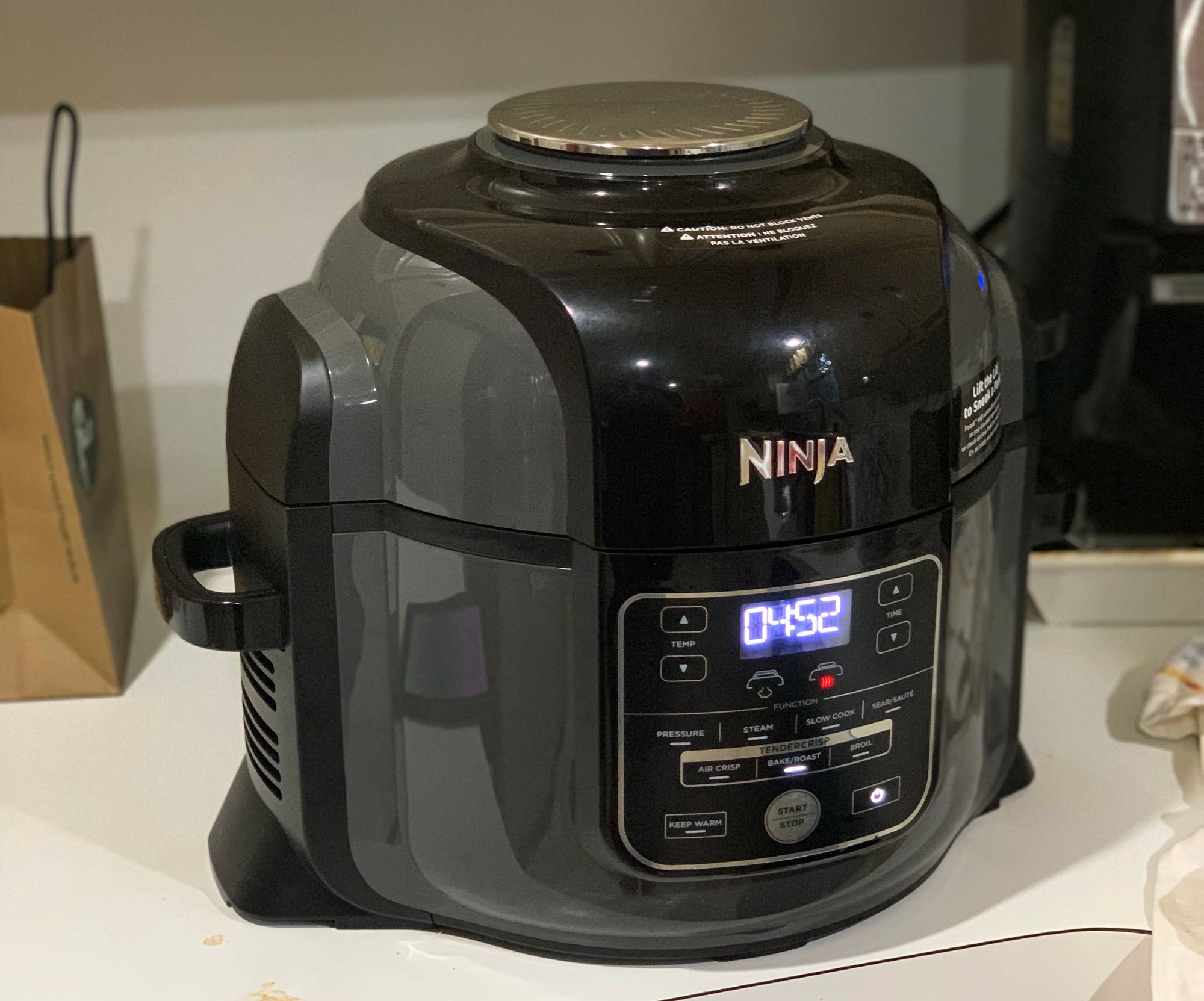
Let's talk about the Ninja Foodi — it's an electric multi-cooker (think about a pressure cooker and slow cooker having a baby and still being able to do each of the respective tasks that their parent products do) plus an air fryer (we'll get there), and, in some models, a dehydrator.
Since they started hitting the scene, I've been skeptical of air fryers. The reason things fry in oil is science. It's a reaction of fat with a surface material at a certain temperature. At best, I can see how air fryers — which basically blow a lot of heat downward onto something that was probably lightly coated in oil (needing way less oil than immersive frying) — can provide a similar texture and browning effect, similar to baking or broiling in an oven. Melissa Clark, a great cookbook author and food writer for the New York Times, recently wrote a great piece about the allure of air frying. Clark ultimately wound up disappointed.
There's certainly a place for this concept in your kitchen, especially if you cook 1,000 things at once, but is it worth the investment?
With the Foodi, Ninja has taken an already eight-to-10-part device and added three or four more parts to it. In addition to the pressure cooking functions, the Foodi also enables baking at a steady temperature in its small cavity, (think breads, pastries, etc.) in addition to air frying (which Ninja almost always calls crisping). Some models also have a dehydrator built in.
If it seems too good to be true, I get it. It sort of is.
What excites me most about the Foodi is not where we are right now with it, but instead where we can go. Devices like the Foodi (at a slightly lower price point) can open a ton of culinary creativity for the average home cook, the same way the Instant Pot did. If home cooking takes a step forward with each device that allows the everyday consumer to make a more flavorful and elegant meal, the Foodi is that step.
Here's the important point I'll make before we dive in: If you don't already own an electric multi-cooker, and you want to get one, the Ninja Foodi is easily the best one I've used. If you do own a multi-cooker, don't rush to replace it. Yet.
Digesting the Foodi
Most of my approach in the kitchen is derived from Alton Brown. I like simple tools that do a bunch of different things. The Instant Pot (which I already own and love) doesn't really abide by his rules (he prefers a stovetop pressure cooker), and while I'm not certain he's on the record about it, I can only assume he's not a big fan.
But the Foodi feels like it could be different — mainly because of who is behind it. Let me introduce you to Justin Warner.
Warner, formerly the chef and mind behind Brooklyn's Do or Dine and the author behind one of my favorite cookbooks out there, thinks about food in a way I envy so much. He's creative, but takes the same methodical care to process that Alton Brown does. They're friends. And Warner considers Brown a mentor. In fact, he even addresses it in the foreword to Kenzie Swanhart's "Ninja Foodi: Complete Cookbook for Beginners."
"I am quite possibly the last person you would expect to write the foreword for this book," Warner writes. "I was mentored by Alton Brown, a culinary titan, who has no use for unitaskers that clutter precious counter space."
Warner goes on to write about how he was skeptical initially about the electric pressure cooker fad. In fact, that same skepticism lead to him working with Swanhart (who wrote the aforementioned cookbook) and the Ninja team to develop the Foodi.
In his foreword, Warner laments the problems current electric pressure cookers (like my trusty Instant Pot) face:
- They don't offer the same control as a stove
- They don't create "textural juxtaposition" — Warner's way of saying that food coming from a pressure cooker is kind of flat texturally.
- They don't reliably sear
- They don't have enough space to manipulate ingredients
- They don't deliver "restaurant quality" results
Despite my love for the ol' Instant Pot, I completely agree with Warner's assessment. Especially the last point. While I loving going out "On the Road" (had to), I also believe deeply in the ability of home cooks to create food experiences that are close to restaurant quality. Unless you're making a soup, or a protein in liquid, with few exceptions, the multi-cooker doesn't offer you that texture that even a pot roast, chicken or the like, can offer you in a restaurant.
The Ninja Foodi solves all of these, Warner says. Let's find out if he's right.
About the test
During a weekend at my girlfriend's parents house, I delightfully discovered a Ninja Foodi in their pantry. It's the 6.5 quart model, without the dehydrating function. As of this writing, it runs for $210 or so on Amazon (yes, that's where all my affiliate links point to — disclaimer at the bottom of this post).
Over the course of about 48 hours, I made four recipes from Swanhart's cookbook. I specifically used recipes that used pressure cooking and crisping to make sure I was getting the most out of the device.
At almost $100 more than the Instant Pot and close to $150 more than a stovetop pressure cooker, does the Foodi justify the expense with enough bang for my buck?
The food
During my four tests, I made:
- Banana Bread French Toast
- Chili-Ranch Chicken Wings
- Creamy Polenta and Mushrooms
- Black and Blue Berry Cobbler
I picked these four items for a few reasons, but mainly because I only had a little less than two days to do it. In addition, I wanted to explore the range of food this device could put out.
The cooking
At least by my count, the Foodi comes to pressure faster than an Instant Pot, which cuts down on the overall time it takes for the food to get from raw to on the table.
Banana Bread French Toast
Easily the best food I made in the Foodi was the French Toast recipe from Swanhart's cookbook. Three of the four recipes, actually, all called for a multi-purpose pan to put inside the pressure cooker. Since I was cooking in my girlfriend's family's kitchen, I didn't want to guess which of their pans were pressure cooker friendly, so I constructed mine out of heavy duty aluminum foil. It worked.

The French Toast recipe called for cubed pieces of bread, doused in the requisite vanilla-milk-egg mixture, plus bananas, cream cheese and pecans. It pressure cooked to soften everything and meld the flavors, then using the "Bake/Roast" function, crisped the top after adding butter, maple syrup and pecans. The dish was flavorful — way more so than could be achieved on a stovetop — and full of texture. Warner was completely right here. My mouth lit up tasting the sweet flavors mixed with the ooey-gooey goodness and balanced by the crisp top and the pecans that were so delicately toasted by the roasting function.

I started with this recipe because it was unlike anything I had ever cooked in a pressure cooker. I wanted to see what the Foodi could do, and with a recipe like this one, you could so easily see the benefit.
Chili-Ranch Chicken Wings
I made wings in the Instant Pot and finished them on the broiler for a Super Bowl a few years ago. They were my favorite wings I've ever made at home. Since the Foodi's claim to fame is the addition of an air-fryer, I knew I had to give wings a spin.
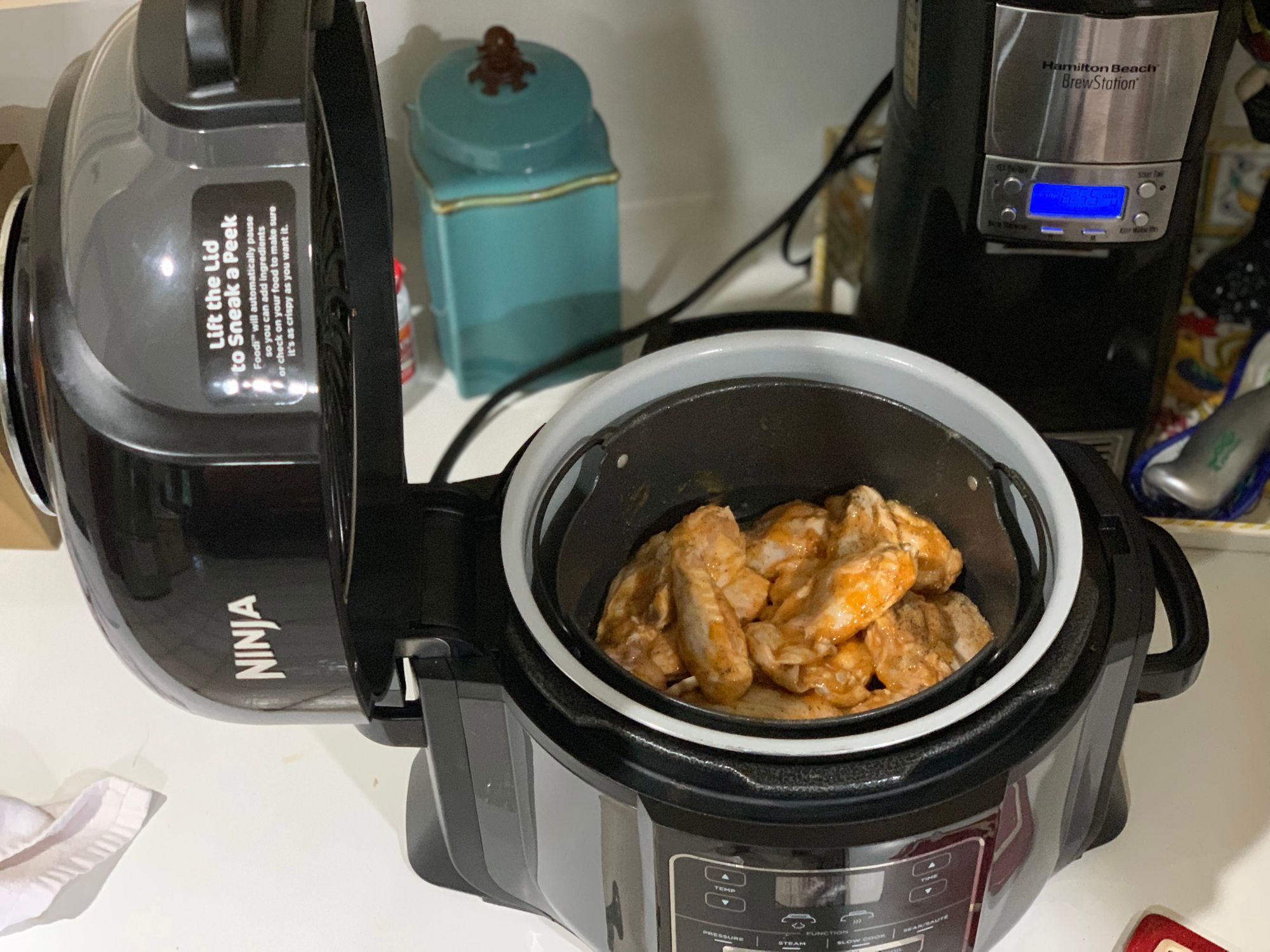
To make them in the Foodi, I seasoned them appropriately (this time a mix of salt, pepper, powdered ranch dressing mix, hot sauce, butter and paprika) and tossed them in the crisping basket that comes with the Foodi. (Note: You can also cook the wings down straight from frozen using the pressure cook function, but the wings I bought were raw and not frozen). Using the AirCrisp function (as recommended by Swanhart), the wings cooked in two parts with a shake in between to make sure different parts of the wing got crispy.
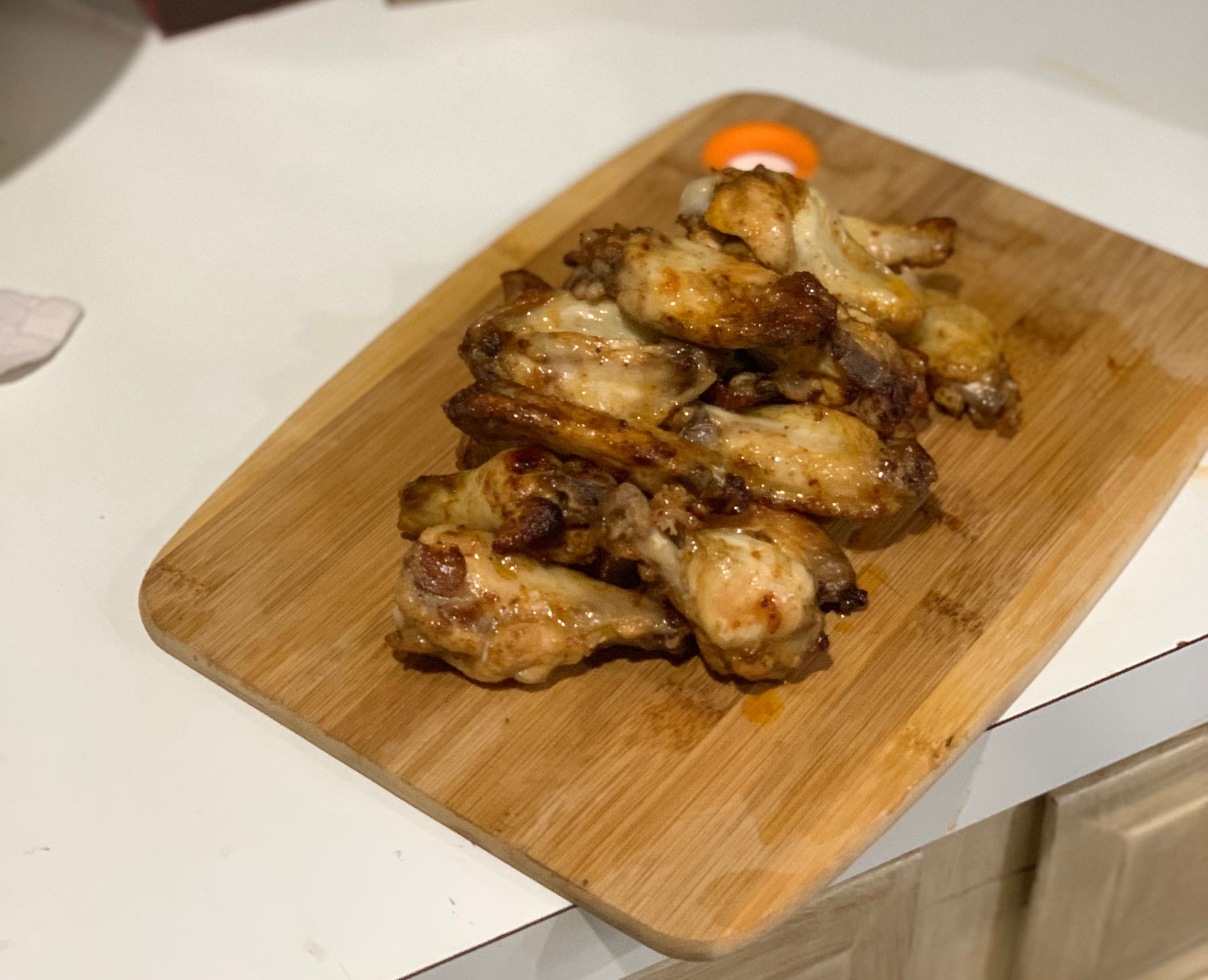
Swanhart's chili-ranch chicken wings were really good wings. They weren't amazing. They also weren't fried or super crispy. But they were really good, and if I owned a Foodi, I'd probably make them a lot more regularly. They were much easier and on-par, however, with the Super Bowl wings from years ago.
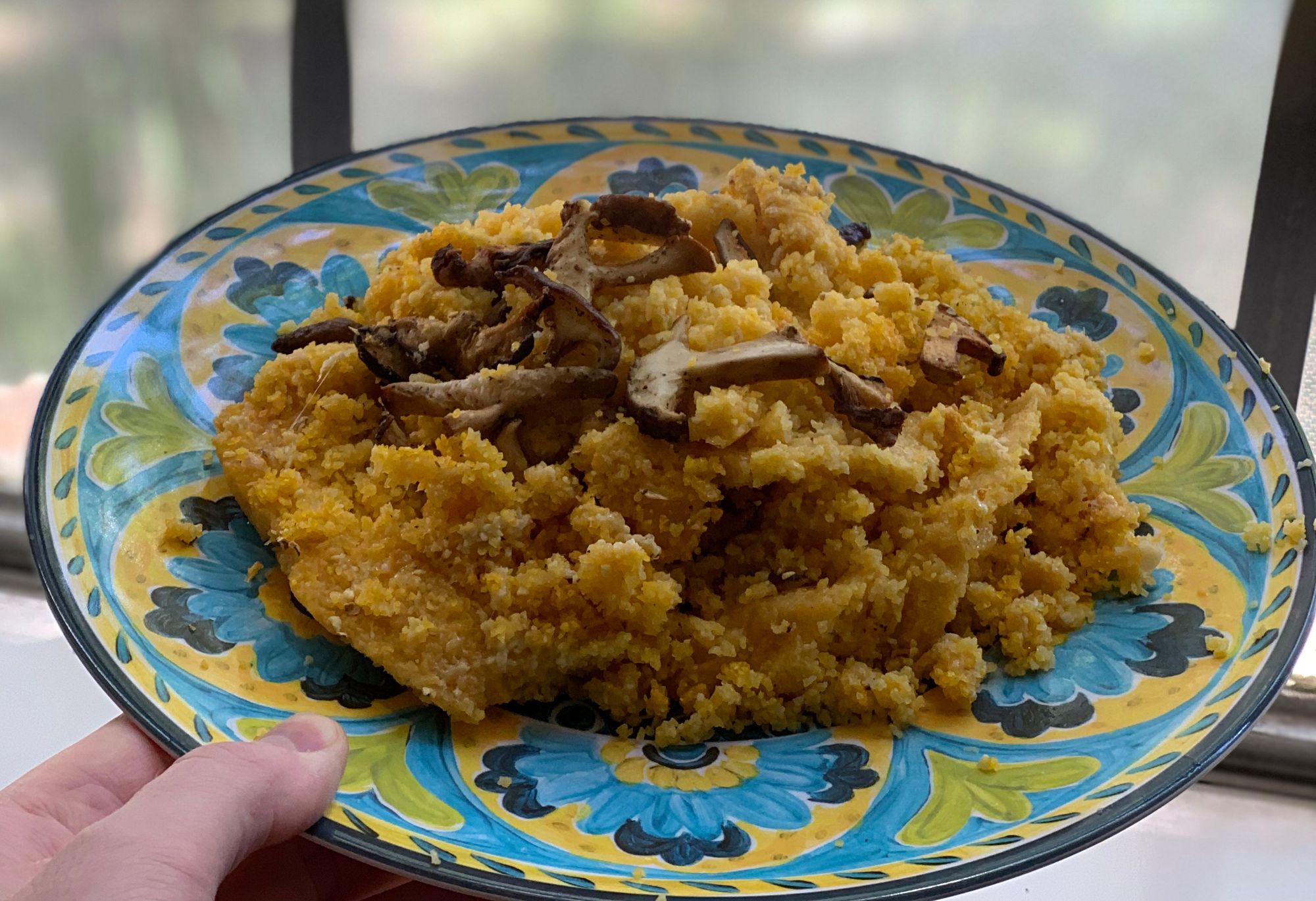
Creamy Polenta and Mushrooms
The other two dishes I made in the Foodi ended up being mildly disappointing, though I'll contend that it wasn't the Foodi's fault, but either my fault or the recipes I used. The Creamy Polenta and Mushrooms just wasn't creamy. Though perhaps if it had been, the way the polenta and the mushrooms crisped on top during the AirCrisp cycle after the pressure cooking cycle may have made a pretty perfect dish.

Black and Blue Berry Cobbler
The Black and Blue Berry Cobbler made borderline fruit soup. The dish starts from frozen fruit that is drizzled with the corn starch slurry present in so many cobblers. After a pressure cooking cycle, the liquidy fruit mixture was topped with a crumble that browned well during the AirCrisp cycle, but mostly submerged into an even-more-liquidy fruit soup by the end of cooking.
Did I still eat this? Yes. Did I still love it? Yes. Was it a cobbler? No.
The verdict
The Ninja Foodi is a really great electric pressure cooker and a perfectly good air fryer all in one.
Is it a game-changing air fryer that makes it so you never need oil again? No (at least not as much as I've tested so far).
By my testing, conceptually there's probably nothing you can do in a Foodi that you can't first make in an Instant Pot (or other multi-cooker) and then broil in the oven (if your oven has a broiler). Yes, it is an extra step and an extra dish, but taking that extra step and using that extra dish is more economical than $200+.
Caveat: If your oven doesn't have a broiler, you should probably buy a Ninja Foodi.
If you already own and regularly use an air fryer and an electric multi-cooker, fear not! By my testing, the Foodi is probably not worth replacing your two perfectly good items with one.
If you're looking to regift them, either separately or together, and you'd like to save counter space and get a device that holds its own really well, the Foodi is your option.
Looking ahead
I would like to do more testing on the Foodi.
I'm really curious about the dehydrating function, I'm curious about how to use the device to really control temperature environments. I also think the four recipes I made from the Swanhart's cookbook took me less time than they would if I cooked them either conventionally or in an Instant Pot-like device.
This November, Warner will release his own cookbook for the Foodi. That could change the game for this device, and his careful look at what you should and should not cook in this thing might be the determining factor.
But: I'm not rushing out to buy one right now. The price tag is steep enough for a kitchen device that I can't justify it. Yet. More testing and time, though, could change my mind.
This post contains affiliate links through Amazon's Associates program. As an Amazon Associate I earn from qualifying purchases. Ninja did not provide me with a unit to test for this post. I read Swanhart's cookbook via my Kindle Unlimited subscription.
